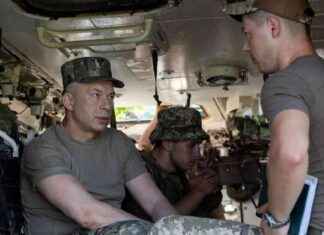In a recent update from the Institute for the Study of War, several key takeaways shed light on the ongoing Russian offensive campaign. Russian Deputy Foreign Minister Sergei Ryabkov announced on February 22 that officials from the US and Russia are scheduled to convene within the next two weeks in a yet-to-be-disclosed third country to discuss bilateral relations. This development comes amidst escalating tensions between the two superpowers, adding a layer of intrigue to the diplomatic landscape.
On the military front, Russian forces have made significant advances in recent days. Notable progress has been reported in Kursk Oblast, as well as in the vicinity of Kupyansk, Chasiv Yar, Pokrovsk, and Kurakhove. These strategic movements mark a continuation of Russia’s aggressive posture in the region, raising concerns about the potential escalation of conflict in Eastern Europe.
One particularly alarming trend highlighted in the report is the Russian practice of deploying wounded and medically unfit soldiers to the frontline. This troubling tactic appears to be driven by personnel shortages within the Russian military, underscoring the strain that the ongoing campaign is placing on the country’s armed forces. The decision to send injured or unwell troops into combat zones raises ethical questions about the treatment of military personnel and the prioritization of strategic objectives over human life.
As the situation continues to evolve, it is essential to stay informed and engaged with the latest developments. For real-time updates and in-depth analysis of the conflict, be sure to follow our coverage on Telegram at @Kyivpost_official. Our team of dedicated authors, including Nicole Wolkov, Angelica Evans, Olivia Gibson, Davit Gasparyan, Frederick W. Kagan, Nate Trotter, and William Runkel, is committed to providing comprehensive and accurate reporting on this critical issue.
Expert Insights on the Russian Offensive
To gain a deeper understanding of the implications of the Russian offensive campaign, we turned to experts in the field for their insights. Dr. Anna Petrov, a specialist in Russian military strategy, emphasized the significance of Russia’s recent territorial gains and the potential impact on regional stability. “The advances made by Russian forces in key areas such as Kursk Oblast are indicative of their strategic objectives and the lengths to which they are willing to go to achieve them,” Dr. Petrov noted. “This aggressive posture poses a significant challenge to neighboring countries and the international community as a whole.”
In addition to territorial gains, the deployment of wounded and medically unfit soldiers has raised concerns among military ethicists. Retired General Mark Thompson, a former military advisor to the US government, expressed alarm at the practice. “Sending injured or unwell troops into combat zones not only jeopardizes their safety but also undermines the morale and effectiveness of the entire military operation,” General Thompson observed. “It is a short-sighted approach that reflects a disregard for the well-being of military personnel.”
Looking Ahead: The Road to Resolution
As the world watches with bated breath, the path to resolution in the ongoing conflict remains uncertain. Diplomatic efforts, such as the upcoming meeting between US and Russian officials, offer a glimmer of hope for de-escalation and dialogue. However, the continued military advances and concerning tactics employed by Russian forces underscore the complexity of the situation.
In the days and weeks to come, it will be crucial for global leaders and international organizations to engage in meaningful dialogue and take decisive action to prevent further escalation. The stakes are high, and the consequences of inaction are too grave to ignore. As we navigate this challenging chapter in international relations, let us remain vigilant, informed, and united in our pursuit of peace and stability in the region.

















